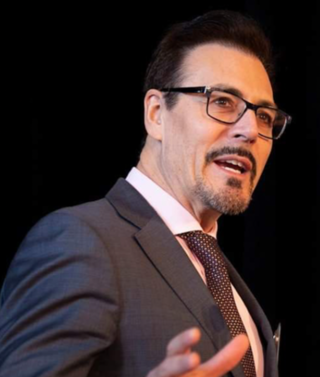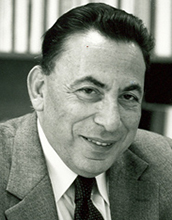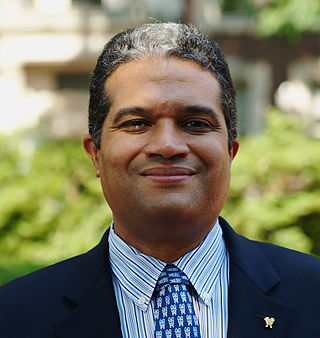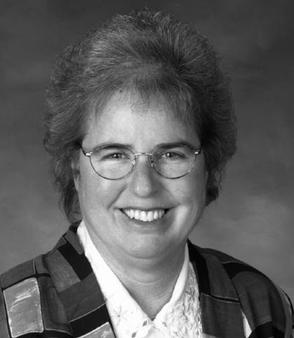Related Research Articles

Robert Heath Dennard was an American electrical engineer and inventor.

Personalized medicine, also referred to as precision medicine, is a medical model that separates people into different groups—with medical decisions, practices, interventions and/or products being tailored to the individual patient based on their predicted response or risk of disease. The terms personalized medicine, precision medicine, stratified medicine and P4 medicine are used interchangeably to describe this concept, though some authors and organizations differentiate between these expressions based on particular nuances. P4 is short for "predictive, preventive, personalised and participatory".

Richard G. Pestell is an Australian American oncologist and endocrinologist who is Distinguished Professor, Translational Medical Research, and the President of the Pennsylvania Cancer and Regenerative Medicine Research Center at the Baruch S. Blumberg Institute. He was previously Executive Vice President of Thomas Jefferson University and Director of the Sidney Kimmel Cancer Center of Thomas Jefferson University. Pestell was appointed an Officer of the Order of Australia in the 2019 Queen's Birthday Honours for distinguished service to medicine and medical education.

Erich Bloch was a German-born American electrical engineer and administrator. He was involved with developing IBM's first transistorized supercomputer, 7030 Stretch, and mainframe computer, System/360. He served as director of the National Science Foundation from 1984 to 1990.
Breast cancer classification divides breast cancer into categories according to different schemes criteria and serving a different purpose. The major categories are the histopathological type, the grade of the tumor, the stage of the tumor, and the expression of proteins and genes. As knowledge of cancer cell biology develops these classifications are updated.
A gene signature or gene expression signature is a single or combined group of genes in a cell with a uniquely characteristic pattern of gene expression that occurs as a result of an altered or unaltered biological process or pathogenic medical condition. This is not to be confused with the concept of gene expression profiling. Activating pathways in a regular physiological process or a physiological response to a stimulus results in a cascade of signal transduction and interactions that elicit altered levels of gene expression, which is classified as the gene signature of that physiological process or response. The clinical applications of gene signatures breakdown into prognostic, diagnostic and predictive signatures. The phenotypes that may theoretically be defined by a gene expression signature range from those that predict the survival or prognosis of an individual with a disease, those that are used to differentiate between different subtypes of a disease, to those that predict activation of a particular pathway. Ideally, gene signatures can be used to select a group of patients for whom a particular treatment will be effective.

Feniosky Peña-Mora is a Dominican-born engineer, educator, and former commissioner of the New York City Department of Design and Construction. He also served as the 14th Dean of Columbia University's Fu Foundation School of Engineering and Applied Science and as the Associate Provost of the University of Illinois at Urbana–Champaign.

Stephen H. Friend is co-founder and director of Sage Bionetworks.
V Ramgopal Rao is an Indian academic currently serving as the Group Vice Chancellor of Birla Institute of Technology and Science, Pilani for campuses located in Pilani, Dubai, Goa, Hyderabad and Mumbai. He was previously the Director of IIT, Delhi for six years during 2016-2021.
Rajiv V. Joshi is an Indian-American prolific inventor and research staff member at IBM's Thomas J. Watson Research Center. His work focuses on the development of integrated circuits and memory chips. He is an IEEE Fellow and received the Industrial Pioneer Award from the IEEE Circuits and Systems Society in 2013 and the IEEE Daniel E. Noble Award in 2018. He holds 271 U.S. patents.
In the field of medicine, radiomics is a method that extracts a large number of features from medical images using data-characterisation algorithms. These features, termed radiomic features, have the potential to uncover tumoral patterns and characteristics that fail to be appreciated by the naked eye. The hypothesis of radiomics is that the distinctive imaging features between disease forms may be useful for predicting prognosis and therapeutic response for various cancer types, thus providing valuable information for personalized therapy. Radiomics emerged from the medical fields of radiology and oncology and is the most advanced in applications within these fields. However, the technique can be applied to any medical study where a pathological process can be imaged.
Maryellen L. Giger, is an American physicist and radiologist who has made significant contributions to the field of medical imaging.
Anant Madabhushi is the Donnell Institute Professor of Biomedical Engineering at Case Western Reserve University (CWRU) in Cleveland, Ohio, USA and founding director of CWRU's Center for Computational Imaging and Personalized Diagnostics (CCIPD). He is also a Research Scientist at the Louis Stokes Cleveland Veterans Administration (VA) Medical Center in Cleveland, OH, USA. He holds secondary appointments in the Case Western Reserve University departments of Urology, Radiology, Pathology, Radiation Oncology, General Medical Sciences, Computer & Data Sciences, and Electrical, Computer and Systems Engineering.

Michael James Carey is an American computer scientist. He is currently a Distinguished Professor (Emeritus) of Computer Science in the Donald Bren School at the University of California, Irvine and a Consulting Architect at Couchbase, Inc..

Joan Laverne Mitchell was an American computer scientist, data compression pioneer, and inventor who, as a researcher at IBM, co-invented the JPEG digital image format.

Merative L.P., formerly IBM Watson Health, is an American medical technology company that provides products and services that help clients facilitate medical research, clinical research, real world evidence, and healthcare services, through the use of artificial intelligence, data analytics, cloud computing, and other advanced information technology. Merative is owned by Francisco Partners, an American private equity firm headquartered in San Francisco, California. In 2022, IBM divested and spun-off their Watson Health division into Merative. As of 2023, it remains a standalone company headquartered in Ann Arbor with innovation centers in Hyderabad, Bengaluru, and Chennai.
Gustavo A. Stolovitzky is an Argentine-American computational systems biologist. He was the CSO of Sema4 and then of GeneDx until December 2023. Between 1998 and 2021 he was a researcher and executive at IBM Research. At IBM he served in several roles including Founding Chair of the Exploratory Life Sciences Council and Director of the Translational Systems Biology and Nano-Biotechnology Program at IBM Research. From 2013 to 2018 he was Adjunct professor of Genetics and Genomic Sciences at the Icahn School of Medicine at Mount Sinai and from 2007 he has been an Adjunct Associate Professor of Biomedical Informatics at Columbia University. His research has been cited more than 29,000 times
Sherene Loi is an Australian oncologist. She is the 2021 winner of the Australian Prime Ministers Prize for Science, in the category of Frank Fenner Prize for Life Scientist of the Year. Loi is Head of Translational Breast Cancer Research, within the Peter Macallum Cancer Centre. Loi's research has advanced understanding into breast cancer, developing and implementing an immune system biomarker. This biomarker will enable improved management for people with advanced cancer. This biomarker is now part of routine pathology reporting across many countries and also is included in the World Health Organization Classification of Tumours.
DREAM Challenges is a non-profit initiative for advancing biomedical and systems biology research via crowd-sourced competitions. Started in 2006, DREAM challenges collaborate with Sage Bionetworks to provide a platform for competitions run on the Synapse platform. Over 60 DREAM challenges have been conducted over the span of over 15 years.
Dinesh Verma FREng is an Indian-born American computer scientist. He is an IBM Fellow working at IBM Thomas J Watson Research Center, Yorktown Heights, NY where he conducts research on technologies at the intersection of the Internet of Things, Artificial Intelligence and Distributed Systems. He concurrently serves as the Technical Committee Chair/Chief Technology Officer of Enterprise Neurosystems Group, an open-source consortium focused on distributed enterprise AI.
References
- ↑ "IEEE Fellows 1998 | IEEE Communications Society".
- 1 2 3 4 5 Moore, Elizabeth Armstrong (18 April 2013). "A new way to predict breast cancer survival". CNET. Retrieved 11 April 2016.
- 1 2 Evarts, Holly. "New Computational Model Can Predict Breast Cancer Survival". Columbia Engineering. Retrieved 11 April 2016.
- ↑ McCarthy, Nicola (May 2013). "Rising to the challenge". Nature Reviews Cancer. 13 (6): 378. doi: 10.1038/nrc3530 . PMID 23640208. S2CID 205469727.
- 1 2 3 Anastassiou, Dimitris (June 1996). "High Definition Television". IEEE Communications Magazine. 34 (6): 108. doi:10.1109/MCOM.1996.506817. S2CID 40143089.
- 1 2 3 4 5 6 "Dimitris Anastassiou Biography". Columbia Engineering. Retrieved 11 April 2016.
- 1 2 3 McCaughey, Robert (2014). A Lever Long Enough: A History of Columbia's School of Engineering and Applied Science Since 1864. New York: Columbia University Press. p. 198. ISBN 9780231166881.
- ↑ "Modern Greece: Science and Technology". Hellenica World. Archived from the original on 3 March 2016. Retrieved 11 April 2016.
- ↑ Peña-Moras, Feniosky. "Dean Feniosky Peña-Mora's Convocation Address". Columbia Engineering. Columbia University. Retrieved 11 April 2016.
- 1 2 "Prof. Anastassiou Wins NIH Award". Columbia Engineering. Retrieved 11 April 2016.
- ↑ Farmer, Melanie A. "National Academy of Inventors Taps Prof. Anastassiou as New Fellow". Columbia Engineering. Retrieved 11 April 2016.
- ↑ "Two Science Translational Medicine Reports: DREAM and Sage Bionetworks Tap into the Wisdom of the Crowd to Fight the Challenge of Breast Cancer Prognosis and Treatment". Reuters. 17 April 2013. Archived from the original on 22 April 2016. Retrieved 11 April 2016.
- 1 2 Swartz, Aimee (4 June 2013). "May the Best Model Win". The Scientist. Retrieved 11 April 2016.
- ↑ Cheng, Wei-Yi; Yang, Tai-Hsien Ou; Anastassiou, Dimitris (17 April 2013). "Development of a Prognostic Model for Breast Cancer Survival in an Open Challenge Environment". Science Translational Medicine. 5 (181): 181. doi: 10.1126/scitranslmed.3005974 . PMID 23596202.
- 1 2 Rettner, Rachael (17 April 2013). "Breast Cancer Survival Predicted By Computer Model". Huffington Post. Retrieved 11 April 2016.
- ↑ Laino, Charlene. "Breast Cancer: 'Geek Sandbox' Holds Clues to Survival". MedPage. The Gupta Guide. Retrieved 11 April 2016.